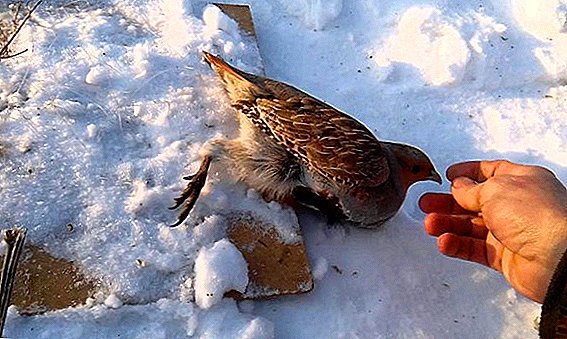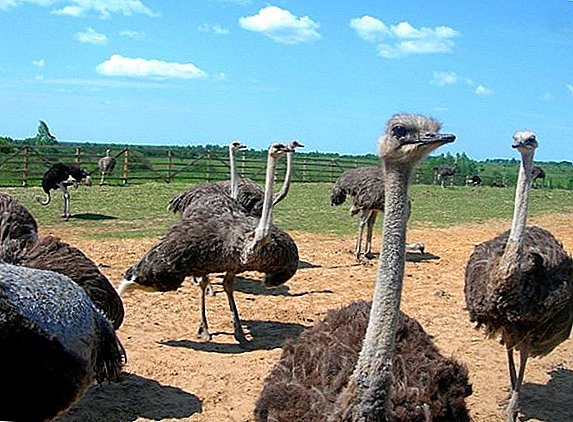 The popularity of the rose is explained many valuable features of this plant: beautiful flowers, pleasant aroma, long flowering period, ease of growing some varieties. In order for roses to remain the pride of your garden for as long as possible, they must be properly nurtured throughout the season. Winter for roses is a rather critical period, which determines the success of the next year of flowering and growth. In this article you will find all the necessary information on how to properly prepare roses for the winter.
The popularity of the rose is explained many valuable features of this plant: beautiful flowers, pleasant aroma, long flowering period, ease of growing some varieties. In order for roses to remain the pride of your garden for as long as possible, they must be properly nurtured throughout the season. Winter for roses is a rather critical period, which determines the success of the next year of flowering and growth. In this article you will find all the necessary information on how to properly prepare roses for the winter.
Do I need to cover the roses for the winter
The frost resistance of species and varieties of roses is determined by their genetic characteristics. Most garden roses grown in our climate require protection for the winter. The exception may be wild, park and ground cover varieties that bloom once per season. They are more resistant to low temperatures. But even in this group there are less hardy representatives.
On the other hand, even among sensitive large-flowered or multi-flowered roses, frost-resistant varieties can be found, such as Alba Meydiland, Aria, Amber Cover, Blaise Superior, Mr. Lincoln, Montezuma or Rosterium Utersen.
 Deciding how to cut and cover roses for the winter, You must be guided by the information given by the manufacturer, and approach each plant individually.
Deciding how to cut and cover roses for the winter, You must be guided by the information given by the manufacturer, and approach each plant individually.
Did you know? In the southern regions, where winters are short with little snow cover, most roses still need warming and protection, becauseThe places in such places are quite frosty (down to -18 ° C).Roses are sheltered for the winter for the following purposes:
- prevent freezing of the roots;
- protect the root collar of the rose from the frost;
- protect the stems from cracking due to large fluctuations in temperature on sunny days and cold nights;
- save the bushes from fractures caused by the weight of snow or ice falling from the roofs;
- shelter from sun exposure and avoid spring sunburn;
- save the plant stems from rodents;
- save shoots as much as possible.
When to start preparing for the winter
Work on the preparation of roses for winter should begin as early as possible (even during the growing season), and they need to be covered only after the onset of frost.
In recent years, there has been a slight warming of the climate, and roses bloom until November. You must consider the local climate and the location of the garden. If your region has a warm and sunny autumn, you can afford to change the preparation time for winter a little.
In the autumn, you need to make sure that shoots at the bush have reached the necessary maturity: this ensures their strength in the winter.
 Preparing for the winter of pink bushes always depends on the temperature. The main rule: the colder the winter, the more the roses need extra protection. Another important rule: do not cover the roses too soon or too late, as this reduces their resistance. Therefore, you should not go to extreme measures in anticipation of severe frosts and deep freezing of the soil.
Preparing for the winter of pink bushes always depends on the temperature. The main rule: the colder the winter, the more the roses need extra protection. Another important rule: do not cover the roses too soon or too late, as this reduces their resistance. Therefore, you should not go to extreme measures in anticipation of severe frosts and deep freezing of the soil.
Did you know? Even such a sensitive variety as a tea rose can withstand a temperature of -5 ° C without shelter.Preferably in the process of buying roses to choose varieties that are most resistant to your climate zone. However, it is not always as easy as it seems. Most new varieties of roses are hybrids and are not always thoroughly tested for frost resistance.
Preparing a rose for winter hibernation
Covering roses for the winter begins with their general preparation for winter sleep. Any discussion of how to help the rose relive the vagaries of winter causes many different opinions. One thing is certain: The rose, which had a long and successful growing season, is able to withstand even the most severe frosts. It is important to prevent diseases and pests, as well as to remove infected shoots during flowering. If the bushes suffered from a lack of water and nutrients or were damaged by disease during the summer or autumn, they will be in a much worse position when winter comes.
Stop feeding and loosening the soil
One of the conditions for successful wintering of rose bushes is their stay in the fall in a state of rest: the plants should have time to get stronger before the onset of cold weather. To achieve this, it is necessary to stop feeding and loosening the soil by mid-August. Any fertilizers and physiologically active substances that stimulate the growth of roses can be used only in the first half of summer. From mid-August, all agricultural procedures should be aimed at slowing down and stopping growth. Otherwise, the immature shoots of roses will die in winter.
 Experienced gardeners claim that The most important period in the preparation of rose bushes for the winter cold is mid-autumn.
Experienced gardeners claim that The most important period in the preparation of rose bushes for the winter cold is mid-autumn.
What should be done in October with roses, so that the garden will delight you with an abundance of flowers next season? You should stop pruning weak shoots, so as not to stimulate the emergence of new ones. It is also necessary to reduce or completely stop, depending on the weather, watering. To reduce moisture consumption in too rainy autumn, plastic bushes are pulled over the bushes or grooves for water drainage are pre-digged.
Do I need to prune leaves
Pruning the leaves of roses for the winter should be avoided, as this does not benefit the plant. Pruning reveals the fine structure of the shoot, increases the risk of freezing and infection. The best time to remove leaves from rose bushes is spring. The exceptions are wild roses that bloom once a year.
If necessary, before the onset of winter, only sanitary cuttings are performed, cutting off sick, infected shoots. Besides, You can carefully cut the roses too large, if they interfere with the shelter. But this can be done only if there is no other way to protect the plant.
Important! If you still cut the roses for the winter, do not forget to protect the place of the cut with antifungal ointment (for example, garden pitch).
Garbage removal and bush processing
In the fall, you can begin to clean the rose bushes. Especially carefully you need to collect unhealthy leaves.
 After the first frost Bushes must be thoroughly cleaned of scraps, debris, weeds, which serve as a wintering place for pests and fungi.
After the first frost Bushes must be thoroughly cleaned of scraps, debris, weeds, which serve as a wintering place for pests and fungi.
Also need periodically remove all fallen leaves with their subsequent incineration (without composting).
Than to cover a rose for the winter, we study ways
There are several ways to help winter the roses. The choice of which method works best remains the subject of lively debate among fans of these beautiful shrubs. Fortunately, protecting roses is not a difficult task.
The main methods include: a loose hill, a framework of twigs and wrapping with a net. Do not be afraid to experiment. Make several versions of the shelters, and then select the one that suits you.
Mound hill
This is the most common way of hiding roses for the winter. Such protection will help stabilize the temperature in winter and protect the plant from wind and snow.
The hill is erected between the end of October and the beginning of November. The height should be about 20-40 cm.
The hill is made of loose soil mixed with compost. It is undesirable to rake the ground close to the bush - this can damage the roots and reduce the chances of survival. Land is better to take from another part of the garden.
 The top of the hill is covered with various additional materials: dry leaves, branches of coniferous trees, straw, hay, sawdust, pine needles. The main thing is that they are dry. Wet and cold environment is more damaging to roses than cold, but dry. However, this additional cover may attract rodents. Therefore, when they are present, such protection is not recommended.
The top of the hill is covered with various additional materials: dry leaves, branches of coniferous trees, straw, hay, sawdust, pine needles. The main thing is that they are dry. Wet and cold environment is more damaging to roses than cold, but dry. However, this additional cover may attract rodents. Therefore, when they are present, such protection is not recommended.
Important! Do not cover the roses with peat due to their excessive absorption of water. Moist and frozen peat is harmful to rose bushes; it can cause diseases and infections in the plant.
The framework from rods
The most reliable option of how to prepare roses for the winter is the so-called air-dry shelter. It is a frame construction of special materials.
Above the rose bushes make frameworks of bent wire or planks, which are wrapped in shingles or burlap. On top is laid waterproofing material - film, roofing material.
The shelter should be well ventilated to prevent heat accumulation and mold development on sunny winter days. This requires small holes in the upper part, which will create ventilation and protect the air inside the roof from heating.
These gaps should remain open until the steady frost and freezing of the topsoil.
Wrapping the bush net
 A good option of how to cover the roses can be method of wrapping a bush with a net. To do this, the bush is wrapped with a net, and the inner space is filled with mulch or leaves.
A good option of how to cover the roses can be method of wrapping a bush with a net. To do this, the bush is wrapped with a net, and the inner space is filled with mulch or leaves.
Over the grid is covered with a cover of film or other nonwoven material.
This design may be in the form of a cone or pyramid.
Thus, deciding for myself the question of how to protect rose bushes from low temperatures and is it possible not to cover roses for the winter, should be considered a variety of factors. Much depends on the site and varieties of roses, and from personal experience.












